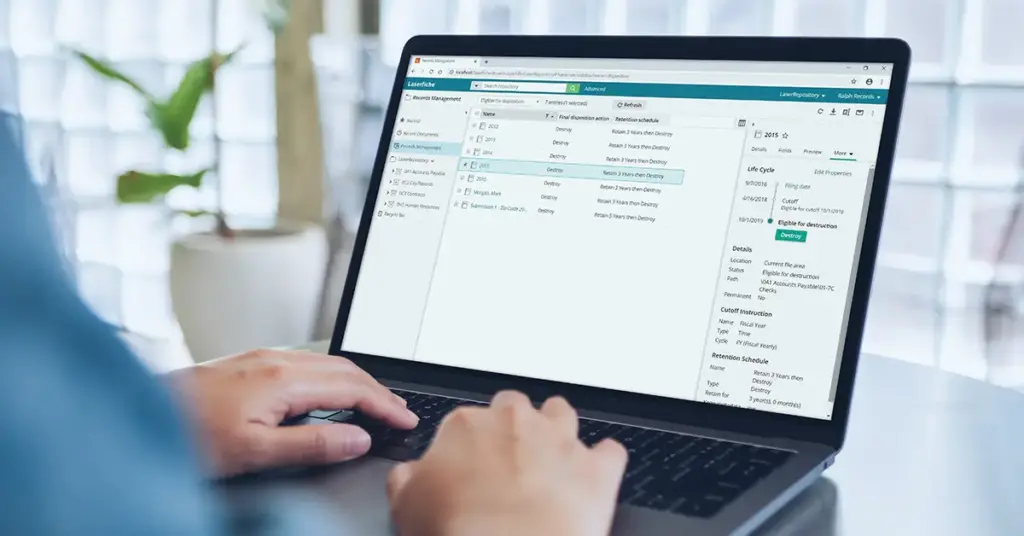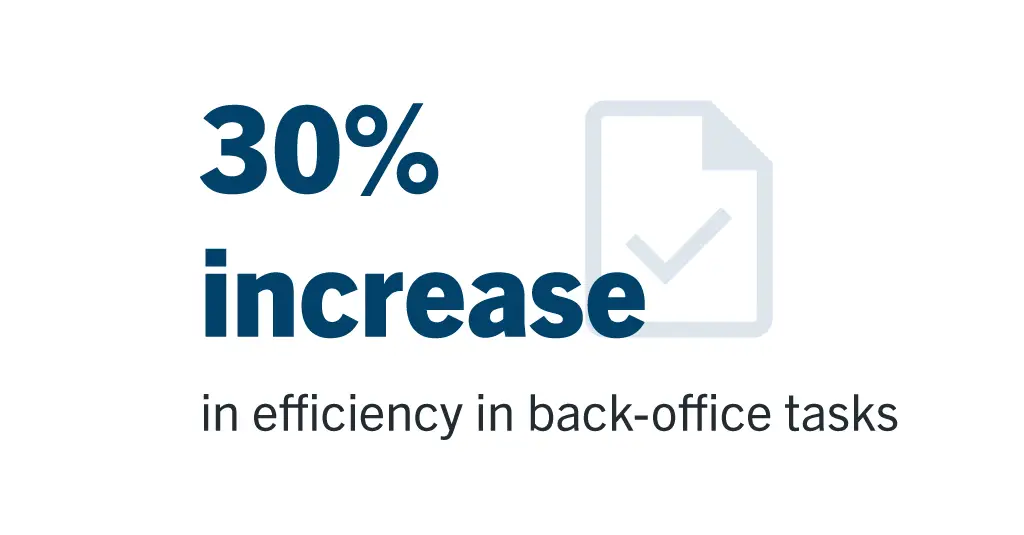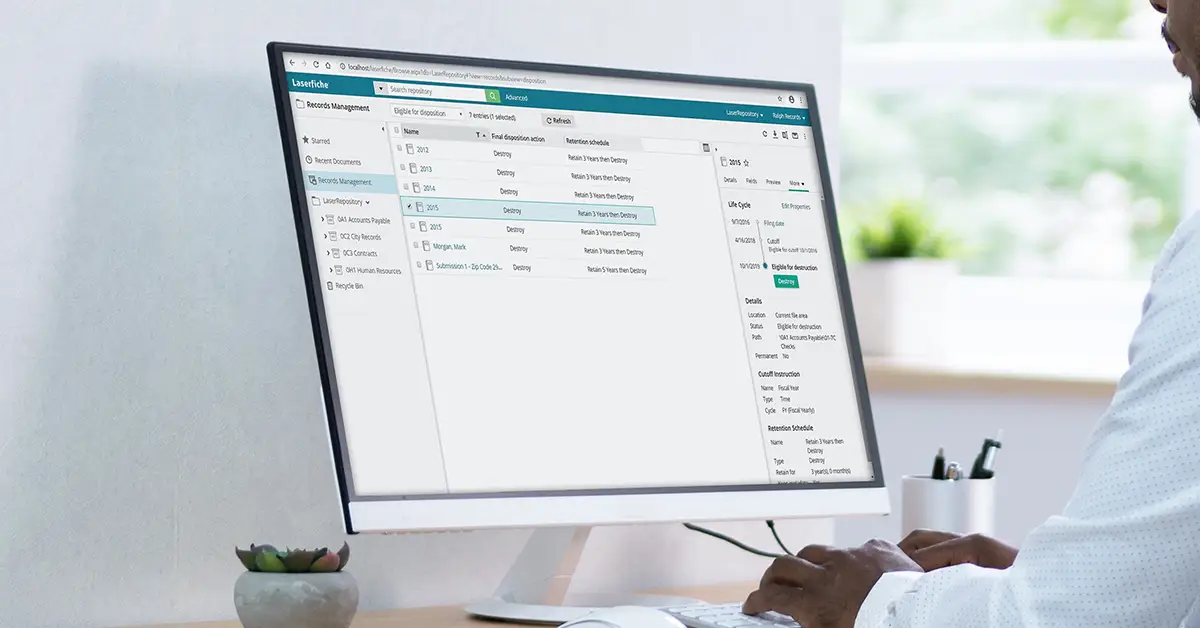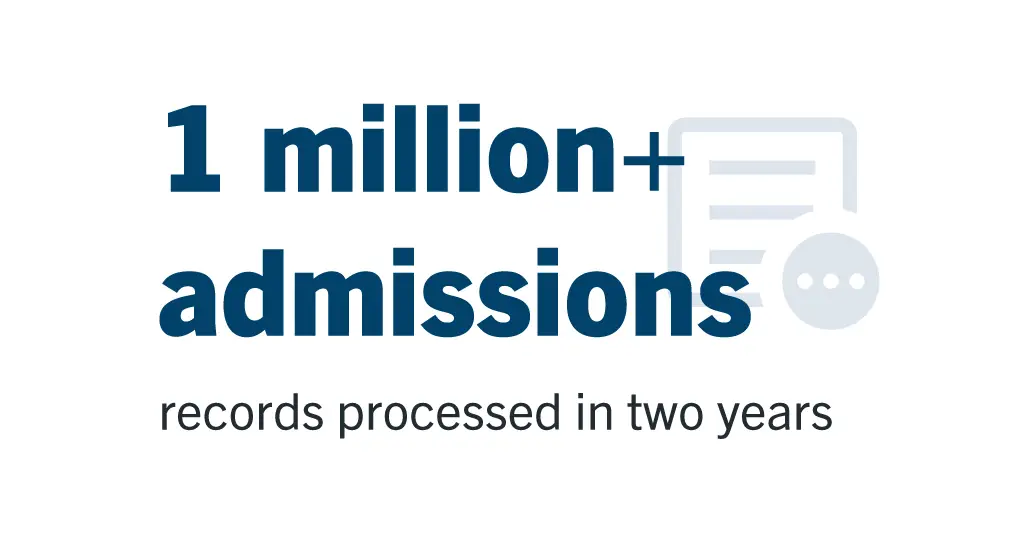SITUATION
• Processes dependent on submission of physical documents
• Wider digital transformation initiated to facilitate service to citizens and minimize storage costs
RESULTS
• Digitized over 400,000 files since 2015
• Increased efficiency in back-office tasks by 30%
The Town of Paradise is a municipality located in the Canadian province of Newfoundland and Labrador near the capital city of St. John’s. Currently serving a population of around 23,000 residents, the town is also one of Atlantic Canada’s fastest growing municipalities with the youngest-aged population in Newfoundland and Labrador. To continue serving a growing population and meet the expectations of an increasingly younger generation of residents, the town has implemented Laserfiche technology to help drive efficiency and a more frictionless experience for residents.

Since implementing Laserfiche in 2015 to scan and manage civic files, the Town of Paradise has digitized over 400,000 files, establishing efficient scanning initiatives to continue supporting its electronic document management initiative. The physical space saved from document storage has allowed the town to hire more employees, which has subsequently expanded the scope and reach of services provided by a growing team.
To support its Laserfiche implementation and uncover additional solutions, the town partners with Ricoh, a Laserfiche solution provider. Beyond scanning, the town has worked with Ricoh to implement automated workflows and electronic forms to further optimize processes, improving the user experience for staff in and out of the office. These initiatives have helped to optimize costs, reduce processing times for key services, as well as improve responsiveness to residents. Using Laserfiche, the town has also been able to strengthen its continuity of services during major disruptions brought about by the COVID-19 pandemic.
Building a Remote, Digital Workforce
The Town of Paradise recognized a need to revamp legacy processes such as enforcement issues and actions reporting and building inspections. The organization needed to streamline data capture, centralize content management and better track information as it moves through the organization.
The issues and actions reporting process, for instance, is used by the town’s municipal enforcement officers (MEOs) when investigating public and private property, as well as municipally licensed and permitted businesses and premises to ensure compliance with acts, bylaws and regulations. This legacy process was digital, but because information was previously hosted on an external database, MEOs could not update it when they were out in the field. Rather, MEOs had to travel back and forth between project sites and the main office for reporting and to submit forms.
The town developed a new form using Laserfiche, which enabled MEOs to use tablets in the field to provide live updates, which are recorded in the Laserfiche repository, eliminating the need for the external database. On top of a savings of $2,500 from eliminating the external database, the town achieved a 37% savings in processing time during the pilot run of the form.
 The town also leverages the collected metadata for a high-level view of action history, open tasks and other metrics. This serves as an efficient way to delegate tasks digitally between management and employees while also improving and accelerating responsiveness to issues and actions requests.
The town also leverages the collected metadata for a high-level view of action history, open tasks and other metrics. This serves as an efficient way to delegate tasks digitally between management and employees while also improving and accelerating responsiveness to issues and actions requests.
“Since implementing Laserfiche, we have greater insight into on-site locations with recurring problems,” said Elizabeth Piercey, purchasing and risk manager at the Town of Paradise. “Staff can more effectively identify and address problems, saving on time and costs without revisiting the same location again.”
Building inspection forms have been similarly updated, making the process more transparent and eliminating paper forms. The Town of Paradise benefits from improved reporting standards and tracking for processes initiated by digital forms, which now enable employees to upload pictures, automate emails to stakeholders, as well as support legal compliance by providing a clear, digital record of actions taken by employees on each project. With inspections centralized in one location and accessible with a click of a button, inspectors can easily input the most commonly used notes and take pictures if required. Benefits also include:
- Accelerated building inspection process time
- Fewer errors
- Enhanced customer experience, including better and more immediate access to inspection slips
- Automatic updates to the town’s main civic files
- Easier job sharing in the event of an employee absence
“Laserfiche Forms has been a great tool for building inspections,” said Dawn Doody, administrative assistant at the Town of Paradise. “It saves time and is more efficient and user-friendly for the whole department.”
Since deploying Laserfiche Forms in 2020, the town has worked to improve the user experience and quality of forms submissions relating to issues and actions and building inspections so that management can develop a better understanding of both employee and resident needs.
Continuity During the Pandemic
In addition to the benefits of cost savings and increased efficiency, Laserfiche has enabled employees to minimize face-to-face contact in office or with residents, which was especially crucial during the pandemic. During major disruptions requiring remote work, the town was able to leverage Laserfiche to provide employees and citizens with continued service using pre-existing and newly developed digital processes.
For example, a Laserfiche solution automating the accounts payable workflow was initially developed and implemented prior to the pandemic, but has now been fully rolled out to all departments. As entire communities were disrupted, this workflow was vital to the on-time delivery of invoices and payment to vendors. It also allowed the accounting division to monitor outstanding items.
“To say the workflow functionality has improved our overall AP process is an understatement,” said Cathy Broydell, manager of finance at the Town of Paradise. “The development of an AP workflow has allowed invoices to electronically move through the approval process seamlessly and has improved collaboration between every employee who is involved with the AP process. Our AP team can now easily track where invoices are within the approval process and as a result are able to process payment for invoices in a more timely and efficient manner. Today, invoices can be easily retrieved by using customized search tools within Laserfiche, and we can confidently say that invoices will never go missing again.”
Similarly, the town developed a correspondence management workflow which routed scanned mail to the appropriate department or user without the need for in-person interaction. Scanned items are tagged with the relevant department and user information. This has supported staff and community health and safety, allowing staff to access mail while working remotely for long periods. Additionally, the correspondence management workflow has provided the Town of Paradise with greater insight into what areas to focus on based on the volume of different categories of mail.
“If we had entered into the pandemic with thousands of undigitized physical files in our office, we would have faced more significant challenges in business continuity,” recalled Piercey. “As staff worked remotely, Laserfiche provided a way for us to access crucial information in a centralized location at our fingertips. This enabled us to respond to residents more efficiently during a stressful period.”
 The Town of Paradise now has 30 active workflows across departments and has continued using these solutions even after the most severe part the pandemic. This has resulted in a more comprehensive and functional digital work environment, better preparing the town to serve the new generation of residents, even during unpredictable circumstances. These initiatives have provided employees with confidence in their own digital transformation efforts, leading the town to continue identifying more areas to automate using Laserfiche.
The Town of Paradise now has 30 active workflows across departments and has continued using these solutions even after the most severe part the pandemic. This has resulted in a more comprehensive and functional digital work environment, better preparing the town to serve the new generation of residents, even during unpredictable circumstances. These initiatives have provided employees with confidence in their own digital transformation efforts, leading the town to continue identifying more areas to automate using Laserfiche.

 “These modern, automated processes have enabled AUC to manage increased information flow without additional burden on students, faculty and staff. Adopting Laserfiche in the Enrollment and Admissions office has led to the migration of over 1 million admissions records and the processing of over 320,000 records in two years, while AUC has also managed over 350 School of Continuing Education petition submission, 1,000 visitor requests and nearly 200 clearance requests in the same amount of time. Additionally, the use of Laserfiche aligns well with AUC’s sustainability goals. “We’ve eliminated the use of millions of paper documents,” Al Ayyat said. “Laserfiche has helped us to achieve our paperless goal and go green.”
“These modern, automated processes have enabled AUC to manage increased information flow without additional burden on students, faculty and staff. Adopting Laserfiche in the Enrollment and Admissions office has led to the migration of over 1 million admissions records and the processing of over 320,000 records in two years, while AUC has also managed over 350 School of Continuing Education petition submission, 1,000 visitor requests and nearly 200 clearance requests in the same amount of time. Additionally, the use of Laserfiche aligns well with AUC’s sustainability goals. “We’ve eliminated the use of millions of paper documents,” Al Ayyat said. “Laserfiche has helped us to achieve our paperless goal and go green.” “The smart process automation in Laserfiche and its capabilities to design very complex processes facilitated the improvement of AUC’s internal processes and enhanced the student experience,” said Al Ayyat. “Laserfiche provides efficiency via intelligent forms with the proper workflow and the proper repository access rights. The smart reporting and analytics of Laserfiche empower the stakeholders in monitoring and identifying process bottlenecks. Overall, Laserfiche enables us to offer our services more quickly and with greater accessibility.”
“The smart process automation in Laserfiche and its capabilities to design very complex processes facilitated the improvement of AUC’s internal processes and enhanced the student experience,” said Al Ayyat. “Laserfiche provides efficiency via intelligent forms with the proper workflow and the proper repository access rights. The smart reporting and analytics of Laserfiche empower the stakeholders in monitoring and identifying process bottlenecks. Overall, Laserfiche enables us to offer our services more quickly and with greater accessibility.”